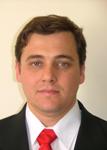Org. Synth. 2009, 86, 374
DOI: 10.15227/orgsyn.086.0374
MAGNESIATION OF WEAKLY ACTIVATED ARENES USING tmp2Mg·2LiCl: SYNTHESIS OF TERT-BUTYL ETHYL PHTHALATE
Submitted by Christoph J. Rohbogner
1, Andreas J. Wagner
1, Giuliano C. Clososki
2, and Paul Knochel*
1.
Checked by Jeremy P. Olson and Huw M.L. Davies.
1. Procedure
A. Preparation of tmpMgCl·LiCl. A dried and nitrogen-flushed 1-L Schlenk flask
(Note 1), equipped with a magnetic stirring bar and rubber septum, is charged with
iPrMgCl·LiCl (792 mL, 1.2 m in THF,3 950 mmol) (Note 2) then
2,2,6,6-tetramethylpiperidine (141.3 g, 1.00 mol) (Note 3) is added dropwise within 5 min via syringe. The mixture is stirred until gas evolution ceases (24-48 h)
(Note 4). Titration prior to use shows a concentration of 0.95 m (Notes 4 and 5).
4,5
B. Preparation of tmp2Mg·2LiCl and synthesis of tert-butyl ethyl phthalate. A flame-dried and nitrogen-flushed 500-mL Schlenk flask (Note 1), equipped with a magnetic stirring bar and rubber septum, is charged with 100 mL of dry THF (Note 7) cooled in a -40 °C cooling bath (Note 8) and stirred for 15 min at this temperature. Then n-BuLi (45.5 mL, 2.22 m in hexanes, 100 mmol, 1.1 equiv) (Note 9) is added at once via syringe. After stirring for 15 min at -40 °C, 2,2,6,6-tetramethylpiperidine (14.1 g, 100 mmol, 1.1 equiv) (Note 3) is added at once via syringe. The resulting mixture is stirred at -40 °C for 5 min and the flask is then transferred to an ice bath (0 °C) and is stirred for 30 min. Then, tmpMgCl·LiCl (105 mL, 0.95 m in THF, 100 mmol, 1.1 equiv.) is added dropwise via syringe in one portion (addition time < 1 min.). The mixture is stirred in a 0 °C bath for 30 minutes and at 25 °C for another 60 minutes. The rubber septum is removed and the flask is stoppered with a glass stopper. The solvents are removed in vacuo using a rotary vane vacuum pump and liquid nitrogen cooled cooling trap (25 °C at 1.5 mmHg). The stopper is replaced by a septum and the resulting pale brown solid is redissolved in 112 mL of dry THF (Note 11) and stirred for 10 minutes at 25 °C. Ethyl benzoate (13.5 g, 90.0 mmol, 1.0 equiv) (Note 12) is added at once via syringe (addition time < 1 min.). The greenish brown solution immediately turns deep red. The reaction mixture is stirred at 25 °C for 30 minutes (Note 13). The red solution is cooled in a -40 °C cooling bath. After stirring for 10 min, Boc2O (28.0 g, 130 mmol, 1.44 equiv) (Note 14) is added in one portion via syringe (addition time < 1 min.). After the addition, the reaction mixture is stirred at 25 °C until a slightly exothermic reaction starts. Then, the flask is put into a water bath (~20 °C) to moderate the exotherm. The reaction is stirred for a further 30 min (Note 15).
At this time, 300 mL of a saturated aqueous NH4Cl solution is added. Large amounts of a precipitate are formed, which are removed by suction filtration (Note 16). The precipitate is washed with approx. 800 mL of diethyl ether until it is colorless. The resulting mixture is brought into a 2-L separatory funnel, rinsing with 50 mL of diethyl ether. The phases are separated and the organic layer is extracted with a saturated aqueous NH4Cl solution (3 × 300 mL). The combined aqueous layers are extracted with ethyl acetate (400 mL). The combined organic layers are washed with 300 mL of brine and dried by stirring for 15 min over 110 g of anhydrous MgSO4 (Note 17). After filtration, the solvents are removed under reduced pressure using a rotary evaporator and vacuum (40 °C, 720 to 50 mmHg). The resulting red oil is loaded on 25.5 g of silica gel, dried for 2 h under high vacuum (Note 18), and purified by column chromatography (Note 19). The solvents are evaporated under reduced pressure using a rotary evaporator and vacuum (40 °C, 720 to 50 mmHg) and dried for 4 h at 25 °C using a rotary vane pump yielding 15.1 g of tert-butyl ethyl phthalate (60.3 mmol, 67 %) as a red oil. (Notes 20 and 21)
2. Notes
1.
The glassware was oven-dried overnight and evacuated using high vacuum (1 mmHg) and backfilled with nitrogen (this procedure was repeated three times). All syringes, cannulas and needles were purged with nitrogen prior to use.
2.
i-PrMgCl
·LiCl was purchased from Aldrich and the solution was titrated using iodine (1 mmol) in 2 mL of dry THF.
3 The submitters purchased
i-PrMgCl
·LiCl from Chemetall GmbH (Frankfurt, Germany).
3.
2,2,6,6-Tetramethylpiperidine was purchased from TCI America and the material was distilled before use (120 °C, 75 mmHg). The submitters purchased 2,2,6,6-tetramethylpiperidine from Evonik Industries AG (Essen, Germany). The amounts of all liquids used in the synthesis were determined by weighing them in a syringe, since this method is more accurate than the determination of the volumes by the scales of the syringes used.
4.
Titration of the base was performed in a dried 10-mL Schlenk tube
(Note 1). The base was titrated against benzoic acid (1 mmol) using (4-phenylazo)diphenylamine (3 mg, Aldrich) as indicator in 1 mL dry THF. Color change from orange to dark violet indicated the end of the titration (consumption 1.05 mL). The submitters purchased (4-phenylazo)diphenylamine from Acros.
5.
The checkers used the base of known concentration in subsequent reactions. The submitters also checked complete formation of the base by quenching an aliquot with benzaldehyde. Absence of 2-methyl-1-phenylpropan-1-ol (detected by GC/MS; M
+=150) indicates full consumption of the Grignard reagent. The submitters performed GC/MS-analysis using an HP 6890 Series GC system equipped with an Agilent 5973 Network Mass Selective Detector. Column HP-5MS (J&W Scientific) (15 m × 0.25 mm × 0.25 μm). Oven program for GC/MS-Analysis: Starting temperature 70 °C for 0.5 min; heating to 250 °C at a rate of 50 °C/min; 5 min at 250 °C; heating to 300 °C at a rate of 50 °C/min, 3 min 300 °C. Aliquots of the base were quenched with benzaldehyde (approx. 0.2 mL) then diethyl ether was added (1 mL). The mixture was extracted with a saturated aqueous NH
4Cl solution.
6.
It is not mandatory to prepare the tmpMgCl
·LiCl on this large scale. It is possible to prepare the base in just the amount needed for this reaction. The description of the preparation refers to a synthesized batch in the submitter's group's usual scale. The submitter has reported that it can be stored at room temperature under nitrogen for more than 6 months without losing efficiency.
57.
The checkers purchased all solvents from Fischer and THF (99%) was distilled and then constantly refluxed from sodium/benzophenone. The other solvents were used by the checkers without further purification. The submitters purchased THF (95 %) from BASF (Ludwigshafen, Germany), distilled and then constantly refluxed from sodium/benzophenone, all other solvents were purchased from Biesterfeld AG (Hamburg, Germany) and distilled before use.
8.
The checkers performed constant cooling using a NESLAB CC-100 cooling device and a stirred ethanol bath. The submitters used a ThermoHaake EK90 cooling device and a stirred ethanol bath.
9.
n-BuLi was purchased from Aldrich and titrated using menthol (1 mmol) in 1 mL of dry THF and (4-phenylazo)diphenylamine (3 mg) (Aldrich) as indicator.
4 The submitters purchased
n-BuLi from Chemtall GmbH (Frankfurt, Germany), and (4-phenylazo)diphenylamine and used the same titration method.
10.
Vacuum was 1 mmHg. During the evaporation process the flask is stored in a water bath (~20°C) to maintain the temperature and ensure steady evaporation.
11.
The actual quantity of dry THF needed may vary up to 10%.
12.
Ethyl benzoate (99%) was purchased from Aldrich and used without further purification The submitters purchased
ethyl benzoate (99%) from Merck.
13.
The checkers continued with the subsequent addition after the reaction had stirred for 30 minutes. The submitters confirmed full consumption of the starting material by GC analysis of iodolyzed reaction aliquots. The submitters performed GC analysis using an Agilent Technologies 6850 Series equipped with an HP-5 column (J&W Scientific) (15m × 0.25mm × 0.25μm). Oven program for GC analysis: Starting temperature 70 °C for 0.5 min; heating to 250 °C at a rate of 50 °C/min; 5 min at 250 °C. Reaction aliquots were quenched with 0.2 mL of a 0.5 M I
2 solution in dry THF mixed with approx. 1 mL of a sat. aq. NH
4Cl and 1 mL of a sat. aq. Na
2S
2O
3 solution and extracted with
diethyl ether (1 mL). The conversion was monitored by GC by controlling the production of ethyl 2-iodobenzoate (retention time 3.45 min) and the consumption of ethyl benzoate (retention time: 2.31 min).
14.
Boc2O (99%) was purchased from Aldrich and melted in a water bath (40 °C) to facilitate the weighing and adding processes. The submitters purchased
Boc2O (99%) from Merck.
15.
The checkers quenched the reaction after 30 minutes. The submitters followed the progress of the reaction by quenching reaction aliquots with 1 mL of a saturated NH
4Cl solution and extracting with diethyl ether. GC analysis after 30 minutes showed the complete absence of ethyl benzoate. The retention time of
tert-butyl ethyl benzoate was 3.75 min.
16.
A glass filter with P3 pore size and a volume of 500 mL were used. Filtration was carried out under reduced pressure (300 mmHg).
17.
MgSO
4 was purchased from Fischer and used as received. The submitters purchased MgSO
4 from Grüssing (Filsum, Germany).
18.
The checkers loaded the crude product onto 25.5 g of silica. It was added to the oil and dried in high vacuum for 2 h. The submitters loaded the crude product onto 25.5 g of Isolute (Biotage) and dried it in high vacuum for 1 h. Isolute is comparable to loading on silica, but it offers very sharp bands as it plays no part in the chromatographical process.
19.
Column chromatography was carried out using a 10-cm diameter column packed with 787 g of silica gel (the checkers used Siliaflash 60, 0.040-0.060 mm; the submitters used Gelduran SI60 from Merck 0.040-0.063 mm) using
n-pentane:diethyl ether 4:1 as eluent (R
f=0.62, TLC aluminium sheets, silica gel 60 F254, Merck). The product is visible under UV radiation as a bright blue fluorescent band. After 2.6 L of eluent, the band is ready to be collected. Collection is stopped when the fluorescence subsides; approx 1.5 L.
20.
The product exhibits the following properties
1H-NMR
pdf (400 MHz, CDCl
3) δ: 1.38 (t,
J = 7.0 Hz, 3 H), 1.58 (s, 9 H), 4.37 (q,
J = 7.2 Hz, 2 H), 7.48 (m, 2 H), 7.67 (m, 2 H);
13C-NMR
pdf (100 MHz, CDCl
3) δ: 13.9, 27.8, 61.3, 81.8, 128.4, 128.8, 130.45, 130.5, 132.3, 133.2, 166.3, 167.8; MS (70 ev, EI)
m/z: 251 (29), 246 (21), 195 (100), 177 (23) [M
+-CO
2Et], 150 (4), 149 (35); HRMS (ESI) calcd. for C
14H
19O
4 251.1278 found: 251.1280; IR (Film)
(cm
-1): 2979 (w), 1715 (vs), 1599 (w), 1579 (w), 1477 (w), 1447 (w), 1392 (w), 1367 (vs), 1286 (s), 1255 (s), 1172 (S), 1123 (vs), 1072 (vs), 1038 (vs), 1017 (vs), 845 (vs), 784 (w), 737 (s), 705 (vs); CHN Analysis for C
14H
18O
4: calcd.: C, 67.18; H, 7.25; found: C, 67.46; H, 7.48.
21.
A 3/4-scale run afforded 12.1 g (71%) of analytically pure product.
Handling and Disposal of Hazardous Chemicals
The procedures in this article are intended for use only by persons with prior training in experimental organic chemistry. All hazardous materials should be handled using the standard procedures for work with chemicals described in references such as "Prudent Practices in the Laboratory" (The National Academies Press, Washington, D.C., 2011 www.nap.edu). All chemical waste should be disposed of in accordance with local regulations. For general guidelines for the management of chemical waste, see Chapter 8 of Prudent Practices.
These procedures must be conducted at one's own risk. Organic Syntheses, Inc., its Editors, and its Board of Directors do not warrant or guarantee the safety of individuals using these procedures and hereby disclaim any liability for any injuries or damages claimed to have resulted from or related in any way to the procedures herein.
3. Discussion
Directed lithiations are important reactions for the functionalization of aromatics and heterocycles.
6 The high reactivity of the organolithium reagents leads to low functional group tolerance. In contrast, magnesium reagents offer also high reactivity in combination with high tolerance of functional groups such as ester, cyano and keto groups. We have shown that the use of magnesium bases like tmpMgCl
·LiCl are suitable for the deprotonation of a wide range of aromatic and heteroaromatic substrates.
5 However, some poorly activated substrates like ethyl benzoate do not undergo metallation at all or the metallation does not lead to satisfactory results. Eaton demonstrated that tmp
2Mg offers high reactivity and functional group tolerance.
7 The limited solubility in common organic solvents, as well as the use in high excess (of the reagent and the electrophile) to achieve full conversion, precluded further use in organic synthesis.
8 During the studies on Grignard reagents we realized that the addition of LiCl could enhance the reactivity and solubility dramatically.
9 Therefore, the addition of two equivalents of LiCl leads to the highly soluble and reactive complex tmp
2Mg
·2LiCl. This composition facilitates the metallation of moderately activated aromatic substrates such as ethyl benzoate, benzonitrile, ethyl naphthanoate or derivatives thereof. The metallation of heteroaromatic subtrates like ethyl nicotinate or diethyl pyridine-3,5-dicarboxylate proceeds without any problems.
8 These organomagnesium reagents can now be used in any typical trapping process, for example Negishi cross coupling reactions,
10 copper(I) mediated acylations
11 or iodo- or bromolysis (Table 1), leading to the expected products in good to excellent yields.
8Table 1 Products of type 4 obtained by the magnesiation of aromatics and heterocycles with tmp2Mg·2LiCl and reactions with electrophiles.a
Appendix
Chemical Abstracts Nomenclature (Collective Index Number);
(Registry Number)
iPrMgCl·LiCl: isopropylmagnesium chloride lithium chloride complex; (807329-97-1)
2,2,6,6-Tetramethylpiperidine; (768-66-1)
Ethyl benzoate: Benzoic acid, ethyl ester; (93-89-0)
Boc2O: Dicarbonic acid, C,C'-bis(1,1-dimethylethyl) ester; (244424-99-5)
tert-Butyl ethyl phthalate: 1,2-Benzenedicarboxylic acid, 1,2-bis[2-[3,5-bis(1,1-dimethylethyl)-4-hydroxyphenyl]ethyl] ester; (259254-67-6)
 |
Paul Knochel was born in 1955 in Strasbourg, France. He completed his undergraduate studies at the University of Strasbourg and his Ph.D. at the ETH Zurich with D. Seebach. He spent 4 years with Prof. J.-F. Normant (Paris) and 1 year with Prof. M. F. Semmelhack (Princeton) as a postdoctoral researcher. After professorships at the University of Michigan and the Philipps-Universität (Marburg), he moved to the Ludwig-Maximilians-Universität (Munich) in 1999. His research interests include the development of new synthetic methods with organometallic reagents, new asymmetric catalysts and natural product synthesis.
|
 |
Christoph J. Rohbogner was born in 1980 in Munich, Germany. After undergraduate studies at the Ludwig-Maximilans-Universität (Munich), he joined the group of Prof. Knochel where he received his diploma degree in Organic Chemistry in 2006. He stayed in the same group for his Ph.D. studies. His current research focuses on C-H activation on arenes and heteroarenes.
|
 |
Andreas J. Wagner was born in 1982 in Regensburg, Germany. After undergraduate studies at the Ludwig-Maximilans-Universität (Munich), he joined the group of Prof. Knochel where he received his diploma degree in Organic Chemistry in 2007. He stayed in the same group for his Ph. D. studies. His current research focuses on amination reactions and organocopper chemistry.
|
 |
Giuliano Cesar Clososki was born in 1974 in Capitão Leônidas Marques-PR, Brazil. He completed his undergraduate studies (1999) and got his Master degree (2000) at the Federal University of Paraná (Brazil) under the supervision of Prof. Fabio Simonelli. He spent 1 year at the University of California working with Prof. Bruce H. Lipshutz (2003) and got his Ph.D degree at the University of São Paulo (2005) under the supervision of Prof. João V. Comasseto. After spending 1 year with Prof. José A. R. Rodrigues (Brazil) and 2 years with Prof. P. Knochel (Germany) as a postdoctoral researcher he got a position at the University of São Paulo - Ribeirão Preto in 2008. His research interests include the development of new synthetic methods with organometallic reagents, biocatalysis and natural product synthesis.
|
 |
Jeremy Olson was born in 1981 in Plano, Texas. He earned a B.S. degree in chemistry from Armstrong Atlantic State University in 2003. He then joined Prof. Huw Davies' lab at The State University of New York at Buffalo, where he focused on the synthesis of natural products using asymmetric [4+3] cycloaddition methodology.
|
Copyright © 1921-, Organic Syntheses, Inc. All Rights Reserved